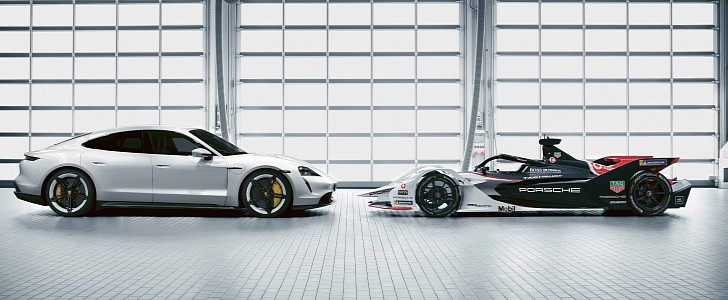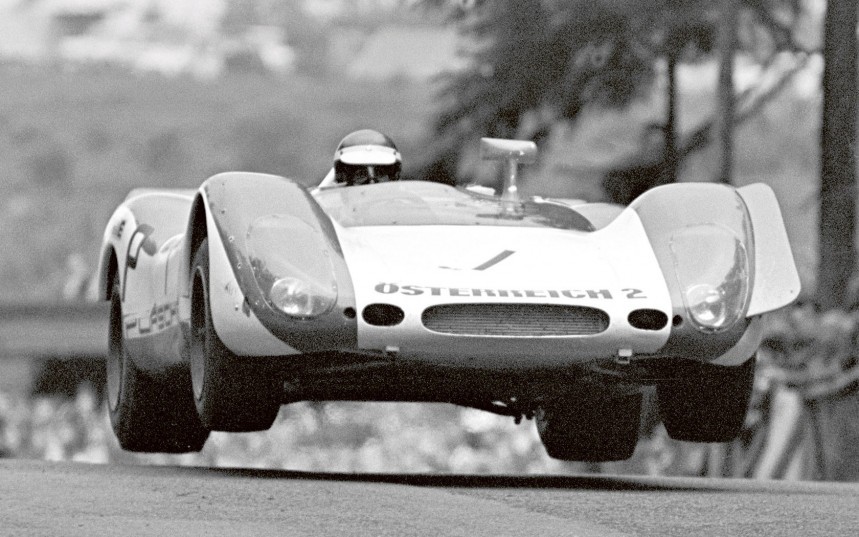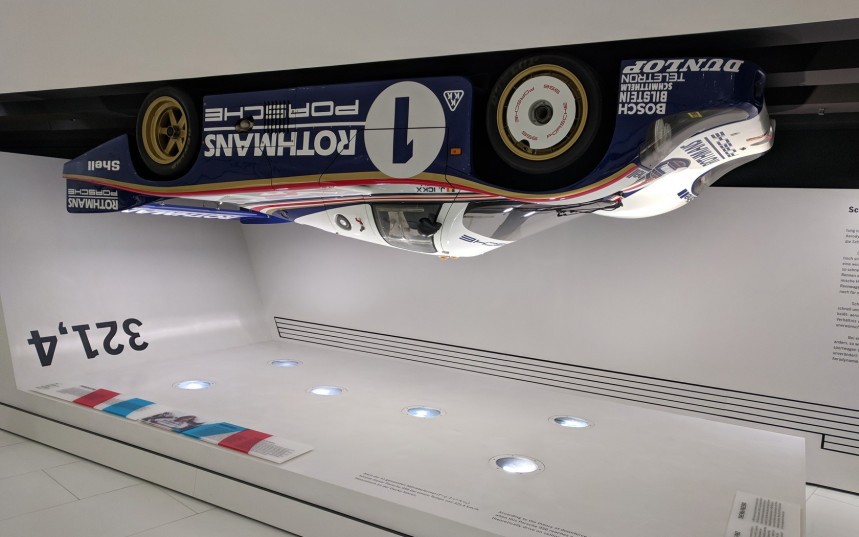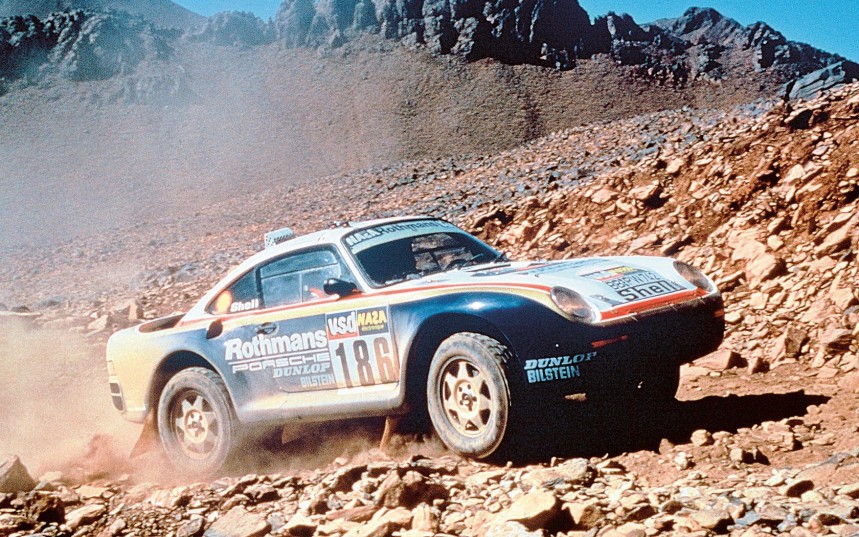Porsche’s racing pedigree is well known in the automotive world, wining the Paris-Dakar rally two times and the prestigious 24-hour race at Le Mans a record nineteen times, among many others. Some of the innovative technologies used on the legendary race cars made their way to the production models, helping them set new industry standards.
In more than 70 years of motorsport, Porsche has become the largest race car manufacturer in the world, building speed machines for various disciplines and competitions.
In 1953, the German carmaker unveiled the 550 Spyder, a race car version of their first production vehicle, the Porsche 356.
Although it featured a four-speed gearbox at first, three years after its debut it was fitted with a revolutionary five-speed synchronized transmission developed with the help of ZF, which allowed faster gearshifts. An improved version of this unit was used in the first generation 911.
In 1968, Porsche introduced the 908 race car, which was designed by Ferdinand Piech to compete in FIA Group 6 Prototype-Sports Cars races.
To comply with the new rules that limited engine displacement to 3000 cc, they built a new flat-eight that produced 350 hp (257 kW). The car also featured an early version of an anti-lock braking system (ABS). This technology made its way to the production line in 1983 as an optional feature, and three years later it became standard on all 928 S models.
Active aerodynamics was first introduced in 1969, on the 917 race car. Powered by a Type 912 flat-12 engine, the 917 gave Porsche its first two 24 Hours of Le Mans titles in 1970 and 1971.
The original version featured active rear wing flaps, which extended when cornering to increase the car’s downforce. Benefitting from this innovative technology was the 964 generation of the 911 model, which used an automatic rear wing.
The Porsche Doppelkupplungsgetriebe (PDK) dual-clutch transmission was first tested in the early 1980s, on the legendary 956 Group C prototype.
The PDK went into production in 2009 on the 997 generation of the legendary 911, while the 956 race car that held the Nürburgring Nordschleife lap record for 35 years is on display upside down at the Porsche Museum to highlight the legendary downforce that would allow it, in theory, to defy gravity and drive on an upside-down track at optimum speed.
Curious as to how much they could do with the rear-engined 911, Porsche developed the all-wheel-driven 959 in the early 1980s. To test the capability of the system It entered the 1984 Paris–Dakar Rally, finishing 1st (Rene Metge), 6th (Jacky Ickx), and 25th.
The 959 went into limited production to satisfy FIA homologation regulations, becoming one of the most epic road-legal Porsches of all time and the four-wheel-drive system became a standard feature for all 911 Carrera 4 models since 1989.
Following a 16-year absence, Porsche returned to Le Mans in 2014 with the revolutionary 919 Hybrid. It won three consecutive FIA World Endurance Championships in both constructors and drivers’ categories while also winning the legendary race every time.
To supply the batteries with the much-needed energy as fast as possible, engineers developed a revolutionary 800-volt electrical system. Starting 2019, it made its way to Porsche’s first mass-produced EV, the Taycan.
The future looks bright for Porsche’s race and road cars, as the manufacturer is heavily focused on advancing progress in electric mobility. To do this, it entered the 2019-2020 Formula E season after leaving the FIA World Endurance Championship in 2017, and the 99X Electric powertrain is already a test mule for future technologies.
In 1953, the German carmaker unveiled the 550 Spyder, a race car version of their first production vehicle, the Porsche 356.
Although it featured a four-speed gearbox at first, three years after its debut it was fitted with a revolutionary five-speed synchronized transmission developed with the help of ZF, which allowed faster gearshifts. An improved version of this unit was used in the first generation 911.
In 1968, Porsche introduced the 908 race car, which was designed by Ferdinand Piech to compete in FIA Group 6 Prototype-Sports Cars races.
Active aerodynamics was first introduced in 1969, on the 917 race car. Powered by a Type 912 flat-12 engine, the 917 gave Porsche its first two 24 Hours of Le Mans titles in 1970 and 1971.
The original version featured active rear wing flaps, which extended when cornering to increase the car’s downforce. Benefitting from this innovative technology was the 964 generation of the 911 model, which used an automatic rear wing.
The Porsche Doppelkupplungsgetriebe (PDK) dual-clutch transmission was first tested in the early 1980s, on the legendary 956 Group C prototype.
Curious as to how much they could do with the rear-engined 911, Porsche developed the all-wheel-driven 959 in the early 1980s. To test the capability of the system It entered the 1984 Paris–Dakar Rally, finishing 1st (Rene Metge), 6th (Jacky Ickx), and 25th.
The 959 went into limited production to satisfy FIA homologation regulations, becoming one of the most epic road-legal Porsches of all time and the four-wheel-drive system became a standard feature for all 911 Carrera 4 models since 1989.
To supply the batteries with the much-needed energy as fast as possible, engineers developed a revolutionary 800-volt electrical system. Starting 2019, it made its way to Porsche’s first mass-produced EV, the Taycan.
The future looks bright for Porsche’s race and road cars, as the manufacturer is heavily focused on advancing progress in electric mobility. To do this, it entered the 2019-2020 Formula E season after leaving the FIA World Endurance Championship in 2017, and the 99X Electric powertrain is already a test mule for future technologies.












